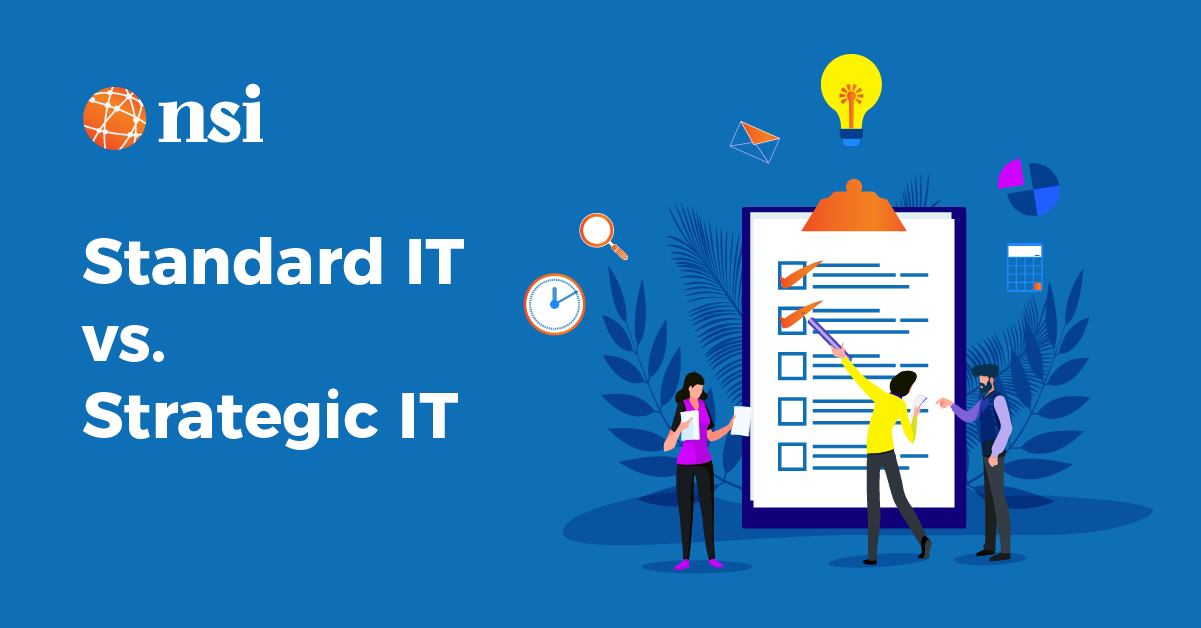
Most of us know the story of Apollo 13, the ill-fated mission in 1970 by NASA to land astronauts on the moon. In brief, what could go wrong did go wrong, resulting in the crew in space and the engineers on the ground performing miracles to get everyone safely back to earth. It can sometimes feel similar in a business IT department, i.e., dealing with problem after problem just to keep the show on the road.
However, here is where many IT departments diverge from the Apollo 13 story.
In all too many businesses, after a day of IT department heroics keeping everything operational, everybody in the company gets up again the next morning and does it all again.
Did the people at NASA do the same thing, firing the Apollo 13 command module back up into space on the biggest rocket they could find? Did they heck. They busted that piece of tech down to its component parts for testing, then they implemented a strategy to make improvements before the next mission.
Just like strategy is important in space exploration (tenuous link time!), it’s also important in IT. Here’s why moving from a standard IT approach to a strategic IT approach is so important.
Strategic IT Ensures IT is Aligned with Business Goals
A standard approach to IT means there is little choice for IT resources but to focus the majority of effort and time on the here and now. IT leaders want to look to the future to help the business in its strategic priorities, but there is no structural alignment between IT and business strategy.
Strategic IT provides this structural alignment, syncing up the company’s strategic vision with IT and how it can be used and optimized to accelerate transformation, optimize growth, and help the business achieve its goals. Aligning IT with business goals also increases profitability, reduces costs, improves decision-making, and simplifies operations.
In other words, it is all about planning ahead.
The process starts by looking at the objectives of the company. What is the company's purpose and vision, and where should the company be in three- and five-years’ time?
It is essential to start with these questions, as strategic IT is not about technology. Instead, it is about your digitally transformed business.
Once there is a clear understanding of where the business is going, there are four further steps in the process:
-
Assess the company's current IT capabilities in terms of internal resources, external support, platforms, and infrastructure.
-
Assess the company's future IT capability requirements in relation to the same areas, i.e., what resources do you need, what external support will be required to help the business reach its objectives, and what platforms and infrastructure will be required.
-
Identify the IT capability gaps that need to be filled.
-
Develop a technology roadmap that outlines the steps you need to take to fill those IT capability gaps.
Strategic IT Ensures IT is Viewed as an Investment Rather than Cost
When IT is viewed as a cost in business, there is a mindset that IT budgets should be allocated to just get the darn thing to work.
This can be frustrating for IT leaders who know technology can do so much more but can't get the funds released to do so. In many cases, in fact, there isn't even a defined IT budget to work from, exacerbating the expectation gap between IT teams, finance departments, and financial decision-makers.
The first step is to define an IT budget that includes provision for unexpected costs. An IT budget will help start the process of aligning IT and finance, as everyone will have a clearer understanding of what money can be spent, is being spent, and why.
Crucially, however, there also needs to be a switch, where IT spending is viewed as an investment, not as a cost. The previous point is crucial to achieving this goal, i.e., you need to first align your IT strategy with the objectives of the business. Doing so directly connects IT spending with the future success of the business, creating an investment mindset.
Strategic IT Aligns Operational Improvements with Business Priorities
IT can improve business operations in a range of ways. Automating manual processes, improving integration, enhancing collaboration, and better productivity are all examples. In fact, the continued business improvements that IT can make are almost endless.
And that's the point. There are not many businesses that have the time, money, or resources to take full advantage of everything that IT can do. Even if a business could, the benefits would vary considerably.
The reality is that there will be some operational gains that IT can deliver that are of minimal consequence to the business overall. There are other improvements, however, that will make a substantial improvement.
Here is the difference between standard IT and strategic IT. With standard IT, there is a focus on what IT can do. This sometimes manifests itself in things like: "...this is a cool feature, so let's make it happen...".
Strategic IT, on the other hand, looks first at business priorities, i.e., where can we make the biggest improvements. Where can we get the best productivity gains, efficiency savings, and returns on investment?
The focus of effort should be in these business priority areas.
Strategic IT Delivers Dynamic Transformation, Not Static Reactivity
Standard IT is static and reactive, with resources focused on the here and now. Even when changes and improvements are made, they are often only successful in bringing the organization from a point of moving backward to a standstill position again.
Strategic IT is an ongoing process, where the stages of assessment, review, and roadmap development are continuous. This leads to a dynamic IT approach where digital transformation is ongoing and there is always a look to the future.
Strategic IT Can Be Measured to Ensure Alignment with Business Objectives
There are some measurements that are possible with standard IT, including some of the most important – uptime and availability, for example. While essential, these measurements only represent a small portion of the overall effectiveness of IT in your business.
In fact, the real measurements of success in IT are not even technology-related. They are business-related.
For example, you might have a business goal of increasing automation to free up resources for more value-added tasks, or you might want to improve customer satisfaction scores. These are goals that could be crucial to achieving your business objectives, with IT playing an important role.
When there isn’t an agreed IT strategy, it can be difficult to make a link between business goals like those above, and IT decisions and investments. A strategic approach to IT gives you this link.
Developing a Strategic IT Approach
Moving from standard IT to a strategic approach is not always easy as it is not something that can be implemented in an IT silo. Others up and across the management and c-suite chain also need to buy in.
We can help at NISI. If you are a CIO, we can provide support to help you develop a costed strategic IT plan that is aligned with your company’s vision, priorities, and objective. If your company doesn’t have a CIO, we can provide similar support by becoming your vCIO.








